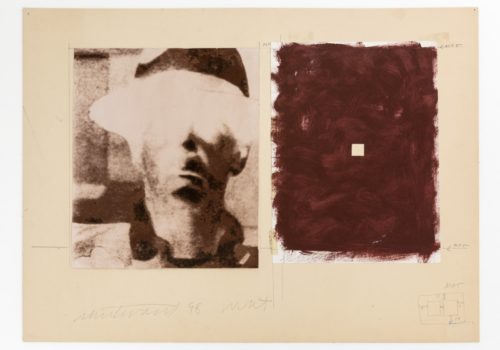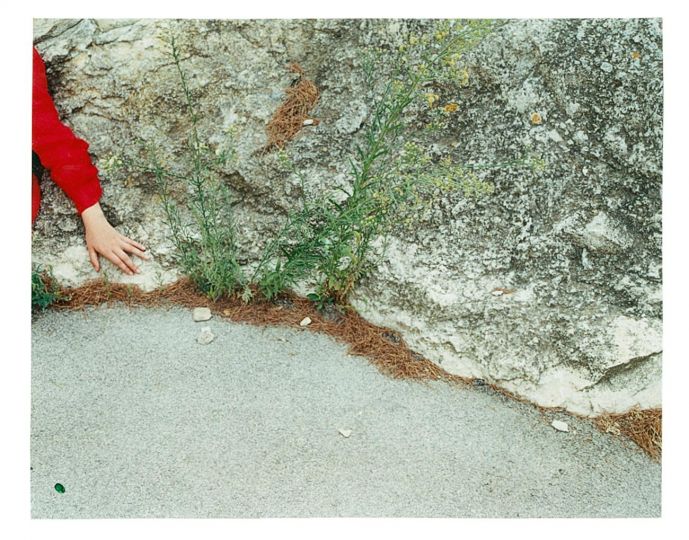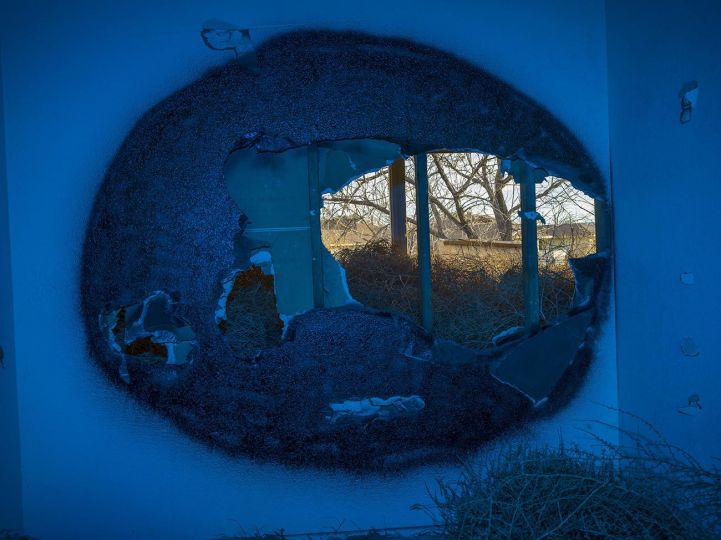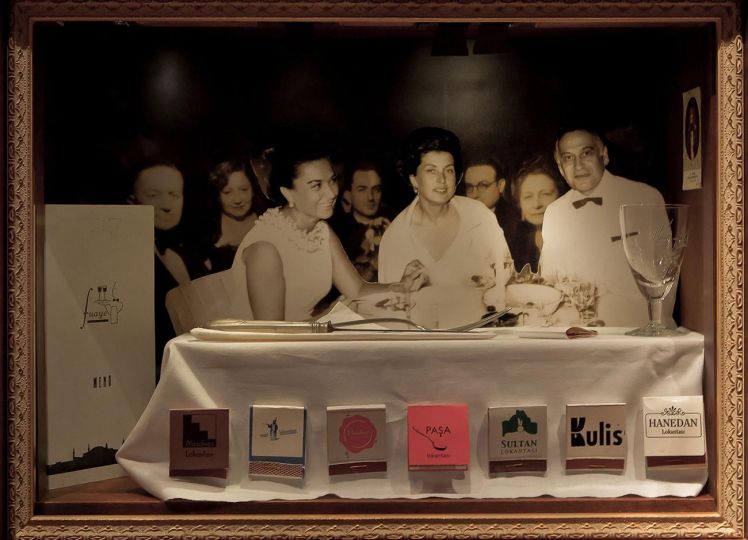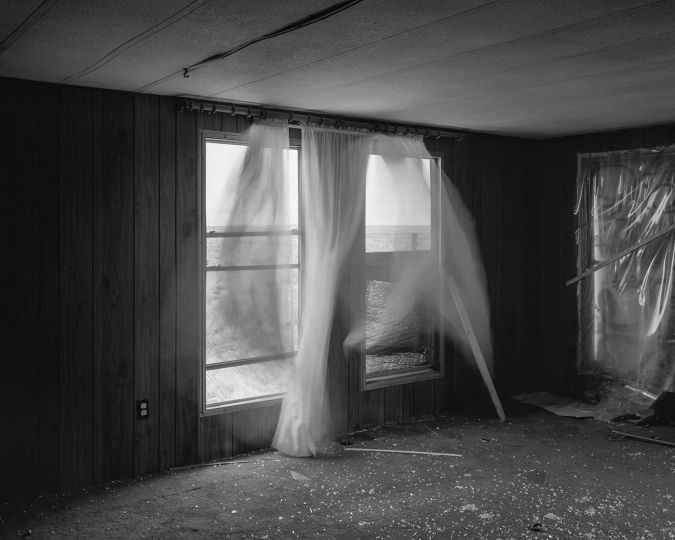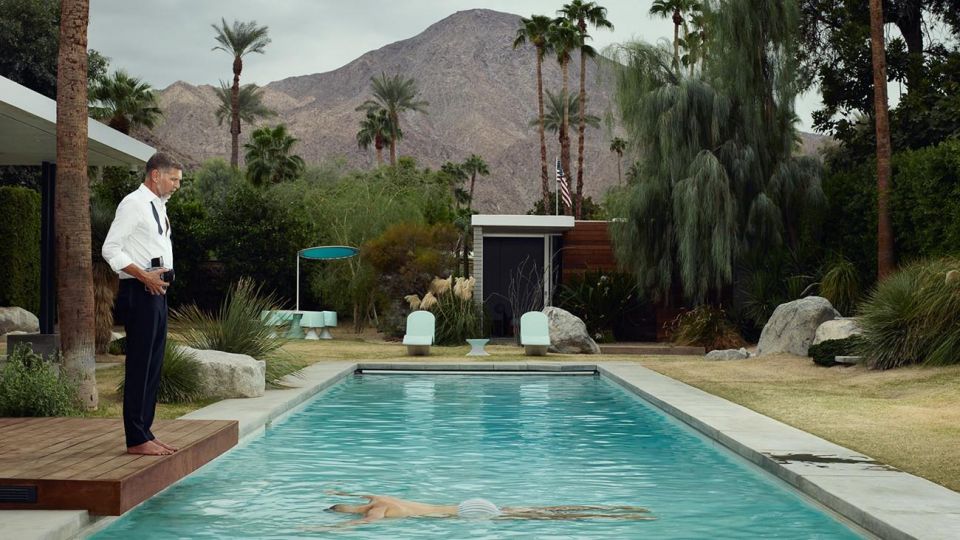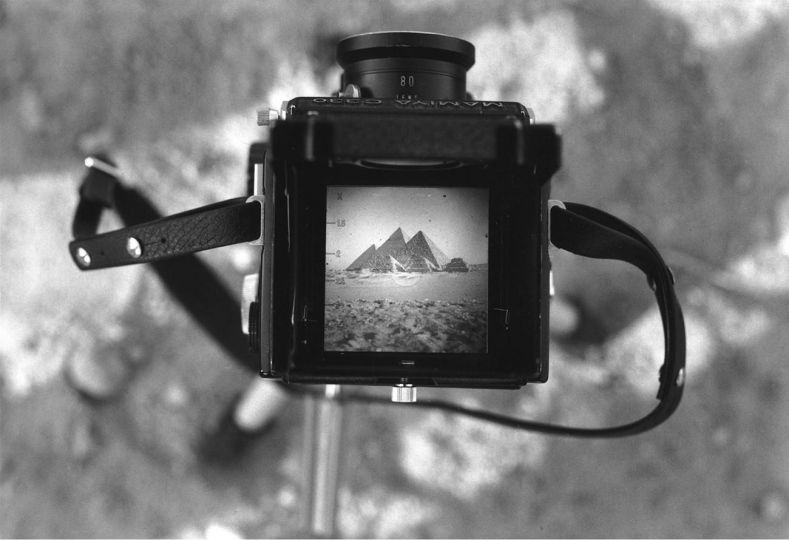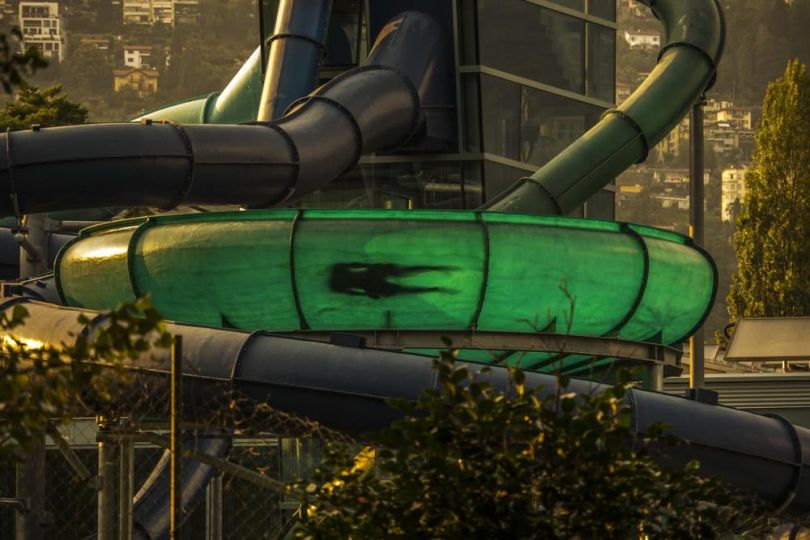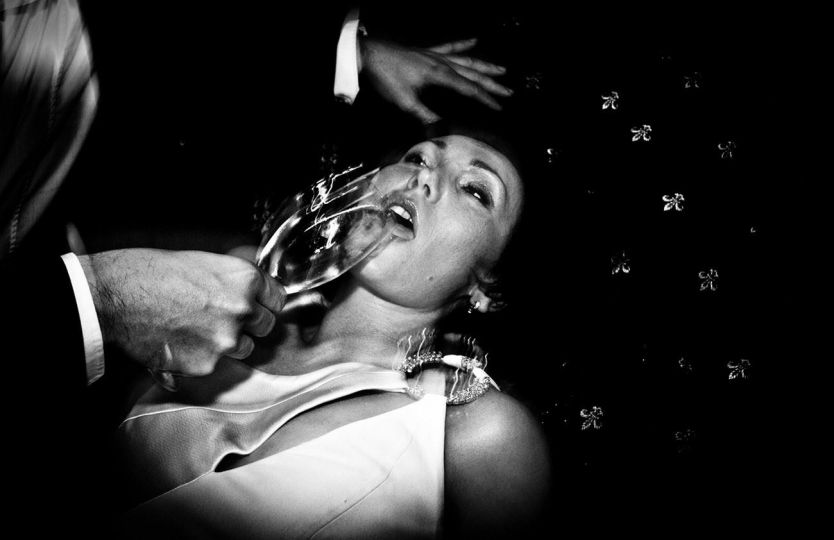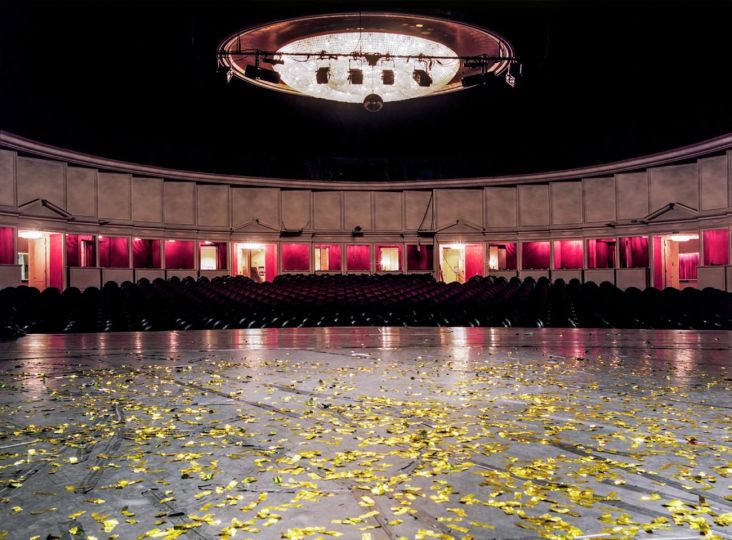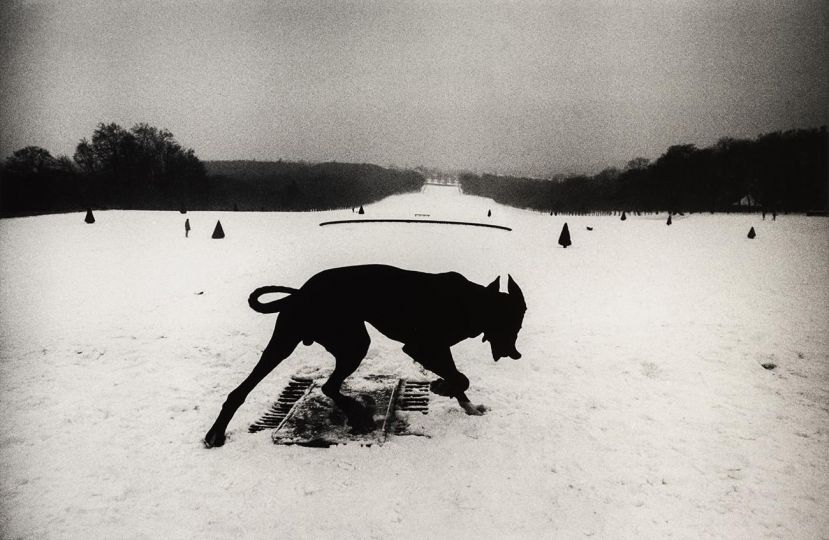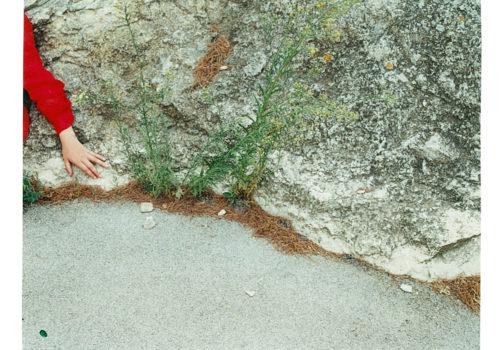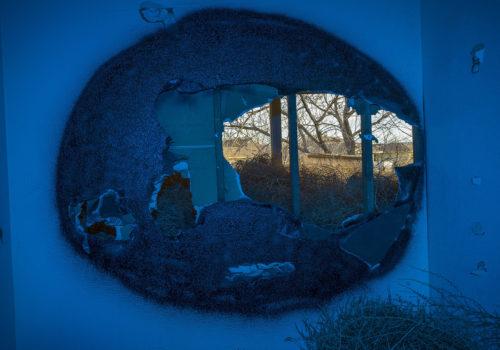Sturtevant has bestowed a particular importance to photography throughout her career and perhaps this medium epitomizes best her resistance to the categorization of her work. Rather than creating exact replications, she engages a dialogue with her sources by complicating the basic mimetic process and often turning it against itself. An exhibition entitled Undeniable Allusion, currently on view at Galerie Thaddaeus Ropac, in Paris, gathers rare photographs and objects by Sturtevant. The works on view, completed between 1966 and 1998, reflect the specific companionship Sturtevant maintained with the work of Beuys, Duchamp and Warhol throughout her life, while highlighting the performative nature of her radical artistic approach.
An early series of photographic collages based on Eadweard Muybridge’s studies of motion sets the tone for the exhibition and shows her longstanding interest in images in action. Walking naked in front of her own versions of works by Duchamp, Johns, Rosenquist, Warhol or Beuys, she subjects both her own work and her body to the objectifying lens of the camera. As Art Historian Peter Eleey points out: “Equating these paintings with the gridded backdrop that Muybridge used to take the measure of his subjects, Sturtevant uses theses photographic effigies of her own work as a kind of scenography against which to gauge her appearance and progress through the frame, and implicitly, beyond it.”
Sturtevant’s Warhol Flowers revisits the series that famously launched her career. It was in 1964, the year they were exhibited at Leo Castelli Gallery, that she made her first “repetition” of Andy Warhol’s seminal floral silkscreens. For this series Warhol sourced his imagery from photographs of seven hibiscus flowers featured in the June 1964 issue of Modern Photography magazine. To create the composition for his works, Warhol cropped the photograph so that four of the original seven fit into this new square format. This unauthorized use of another artist’s photograph is directly connected to Sturtevant’s own serial method, through which she would continue to explore a subject without ever exhausting it.
Curated around the repetition of this iconic image, the Beuys-related and Duchamp-related works demonstrate Sturtevant’s subjective involvement in questioning image making. Of Duchamp she says, “The ready-mades, the most crucial body of work, lack unity, form and meaning, thereby opening a space that allows for posited, subjective or arbitrary meaning.”
By redoing Duchamp’s Fountain and Coin de Chasteté in her own way and by photographing herself with shaving cream in the manner of Duchamp’s famous portrait by Man Ray, she goes to the inner core of the works and creates an intimate link with the artists. Dressed in Joseph Beuys’ iconic archaeologist/safari garb, Sturtevant becomes, in some sense, an art historical adventurer. Her concept of ‘repetition as difference’ has enabled her to revisit art historical narratives and reconfigure our traditional understanding of artistic practice.
The exhibition display aims to echo the sense of circularity that pervades Sturtevant’s oeuvre. From her early conceptually based work to her later interest in cybernetics she has always sought the same forward movement. “What is currently compelling is our pervasive cybernetic mode, which plunks copyright into mythology, makes origins a romantic notion, and pushes creativity outside the self. Remake, reuse, reassemble, recombine—that’s the way to go.”
Sturtevant, Undeniable Allusion 1966-1998
April 22 – June 17, 2017
Galerie Thaddaeus Ropac
7, rue Debelleyme
75003 Paris
France

